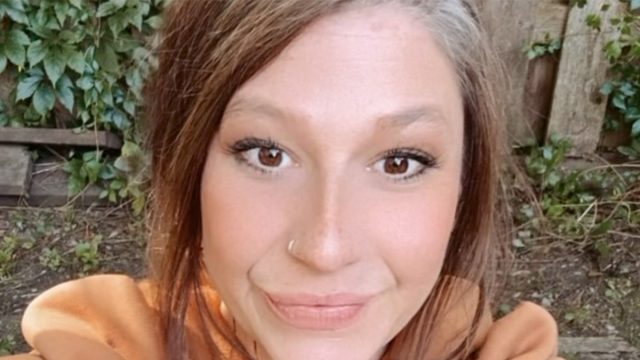Woman Drops 35 Pounds After Finding 5 Surprising Cortisol-Lowering Habits
Are high cortisol levels keeping you from achieving your weight loss goals? If so, correcting them might be easier than you think. Amanda Borchardt is a cortisol expert and coach who lost 35 pounds when she finally "cracked the code" to cortisol and adopted certain habits that helped her keep her hormones under control. "If you want to lower cortisol and be unrecognizable," she writes across the video. "For the next 4 months, be obsessed with these five habits."
She "Cracked" the Cortisol "Code"
"Does High Cortisol have you struggling to feel good and lose weight?! I've been there! I finally cracked the code so I can help you! 5 habits to start to lower cortisol and lose weight by the New Year!" she adds in the post.
RELATED: Want Flat Abs? Ditch These 7 Foods From Your Diet, Says Expert
Replace "Hard" Workouts with Walking and Lighter Ones
Her first habit has to do with exercise. "Ditch hard workouts and start walking and doing light strength training until your cortisol is balanced. I intensity interval workouts with spike your cortisol, making you sicker and leaving your body holding onto fat," she writes.
Get More Rest
Sleep is also important. "Getting 8 hours of rest! Getting enough sleep is a huge part of balancing your cortisol! Staying up late will prolong your cortisol staying high. Start changing your sleep habits!" she writes.
Take a Look at Your Diet
The next cortisol topic she tackles is diet. "Do you know sugar will keep your body inflamed and your cortisol high, and when your cortisol is high, you will crave sugar? Get off the hamster wheel and start upping your protein and reducing your sugar. You will feel better in no time," she writes.
RELATED: She Dropped 160 Pounds After Admitting 9 "Hard Truths"
Hydration
Hydration is also key, she says. "Drinking enough water but adding electrolytes or minerals! Water alone doesn't hydrate your body in the way it needs. Drink up!!!"
Supplements
Amanda recommends taking supplements. "Add a cortisol-lowering supplement that will excel your results and skyrocket your progress! The one I use boosts metabolism helps lower cortisol, and gives a calmness to combat stress!!!" she says.
She Weighed 2015
In another post, she elaborates on her weight loss journey. "Change is good," she writes. "Small changes and swaps equal big results!" she explains that she was her heaviest at 215 pounds. "I was struggling with extremely high cortisol and didn't know it. I couldn't lose weight despite my 5 times a week, hard workouts, and dieting. I was constantly sick, and I had off-the-wall cravings. I was extremely active prior and understood the importance of exercise, but for some reason, none of my efforts were bearing fruit," she said.
RELATED: 5 Protein Mistakes You're Making That Stop Weight Loss, Expert Says
However, She Lost Weight When She Made Those Changes
"I learned about high cortisol, put my foot down, and decided it was time for change. I added the best cortisol supplement on the market and implemented five cortisol-balancing strategies, and within a month, I started feeling better! It took some willpower to drag my exhausted butt off the couch, but I knew I needed to change with the help of a supplement that helps with energy and mood. I started walking 10,000 steps a day instead of hard workouts that were spiking my cortisol higher. Now, I am on a health and weight loss journey that I couldn't seem to obtain for the last few years. So grateful for natural affective supplements and for cortisol education!" And if you enjoyed this article, take advantage of these 15 Quick Ways to Lose Body Fat Percentage in a Week.





